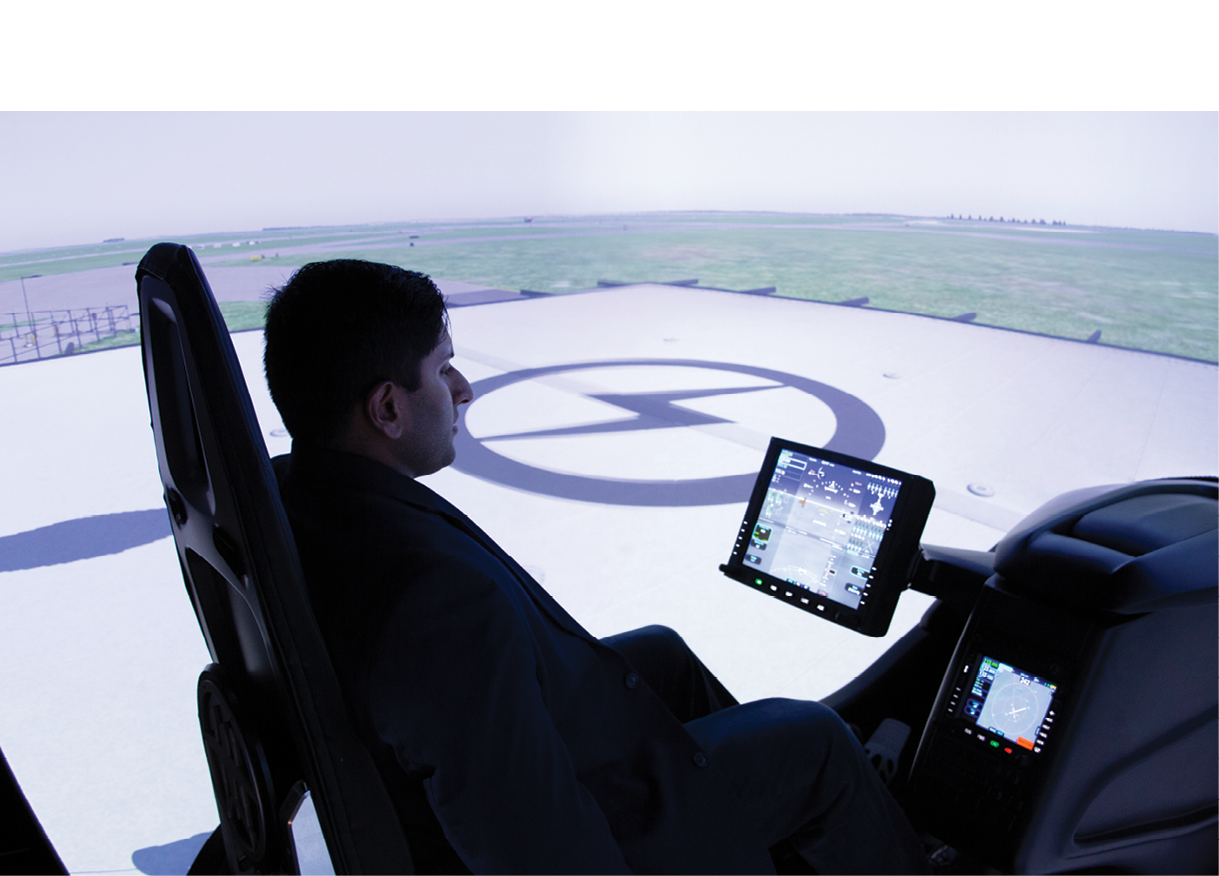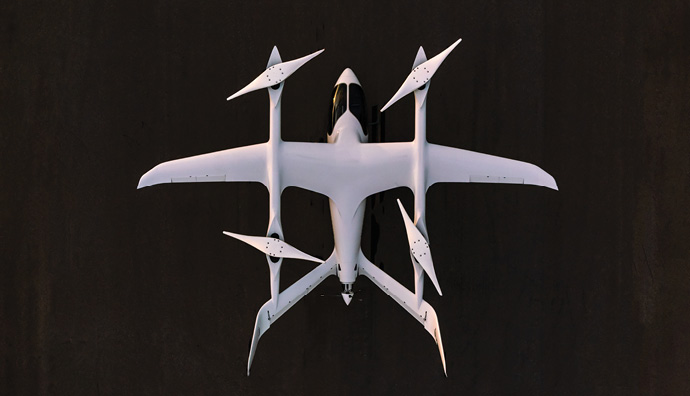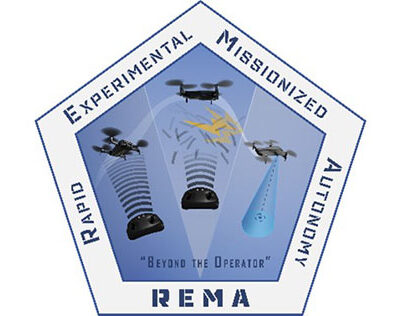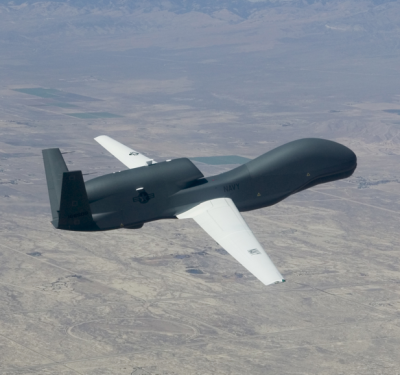
Two BETA Technologies eVTOL flight simulators are part of an Agility Prime program to allow Air Force pilots and engineers and operational concept developers test flight and mission sets.
Since the start of 2021, Darshan “Dash” Divakaran has operated at the nexus of military and commercial UAS development.
He’s now senior operations research analyst for AFWERX, the agency that seeks to circumvent bureaucracy and “accelerate inventive solutions from individuals, startups, small and large businesses, academia and research” at what Air Force Vice Chief of Staff General Stephen Wilson calls “the speed of relevance.” As such, he’s been involved in programs that have steered millions of dollars toward innovation.
He also is a program manager on Prime, in which Agility Prime provides funding, test resources and use cases to accelerate commercial markets for eVTOL and other technologies. He has a similar title with AFVentures, the business arm that facilitates funding and knowledge for innovators. And he’s a subject matter expert on unmanned systems with SPARK, a central collaboration and training partner to “cells” of Air Force personnel worldwide who seek to innovate and scale their ideas.
Divakaran’s interests includes unmanned traffic management (UTM), counter-UAS (CUAS) and urban air mobility. He holds both commercial multi-engine and remote pilot licenses.
Photos courtesy of Alex Mihaly and AFWERX.
IUS: WHAT DO YOU SEE AS THE KEY AREAS FOR INNOVATION?
DIVAKARAN: I’ve been in the UAS part of the industry for over six years now, and I’ve witnessed some amazing innovation. I have seen sUAS evolving from a tool in our tool belt to an eye in the sky.
We can call it Aviation 2.0. Small UAS, large UAS, now eVTOL—the whole aviation industry is seeing a rebirth. I think this is beautiful.
The best part of innovation is that it’s not just a technology but a whole industry and a whole opportunity that’s being created. That is what amazes me. On the military side, unmanned systems have been used for years, but COTS (commercial off the shelf) is becoming a tool for the military—security, logistics support, emergency response. So we are seeing innovation, not just on the commercial side, but also on the military side.

LIFT Aircraft participated in an Agility Prime ORB (eVTOL) flight demonstration.
IUS: WHAT HAVE BEEN YOUR KEY INITIATIVES SINCE JOINING BOTH AFWERX AND AGILITY PRIME?
DIVAKARAN: I’ve been wearing multiple hats, but my key focus is unmanned systems. On the Agility Prime side, I’ve been working with eVTOL companies on the Air Race for Certification, and to operationalize eVTOLs by 2023. But Agility Prime is just one of the many Primes and focuses in the pipeline: there is Space Prime, Autonomy Prime, other Primes that we are in the process of creating. I’m working closely with the leadership on that, building connections and focus areas.
On the AFVenture side, I am interested in SBIRs [Small Business Innovation Research] and STTRs [Small Business Technology Transfer], where we help small businesses and startups move from just a feasibility study to a Phase II contract, where we can see prototypes of the ideas, and also connecting these companies to Air Force technical points of contact [TPOCs] with companies involved in our programs. (For more on this process, see the “Fueling Innovation” box that accompanies this story).
I’m also assisting with SPARK locally. SPARK brings innovation to airmen and guardians, to create projects and initiatives, giving them tools and connecting them to industry.
I work as an AFWERX liaison to other federal agencies like NASA, FAA, the White House Office of Science and Technology Policy, and DOD, to see how we can have synergies, or if there are initiatives we can create. When you do a lot of innovative initiatives, you also have to share that with the world, so I also assist with the communications and marketing team.
Sometimes people think Agility Prime is the only AFWERX initiative. During the pandemic, AFWERX was able to support procurement of over $50 million worth of personal protection equipment. AFWERX contracts can be used for procurement purposes during national emergencies.
IUS: WHAT DO YOU THINK YOU PERSONALLY BRING TO THIS WORK?
DIVAKARAN: In the last 10-plus years, I have worked with universities, industry, state and local agencies, nonprofits on emerging technology. I have been that out-of-box thinker who helps provide guidance beyond a one-year plan, to see how innovations can sustain themselves.
IUS: WHY IS THERE A NEED FOR SCRAPPY AMERICAN STARTUPS?
DIVAKARAN: We have to see where innovation truly lies. Many technology solutions could be with the most unexpected company in the most unexpected location. If we are not able to reach out to them, and provide them the right funding, the right guidance, we are not going to find that solution.
People working in startups, they are folks who are ready to take the risk to bring their ideas to prototype. We want to make sure the U.S. economy is moving. We want to make sure our innovators are getting the motivation.
IUS: YOU’VE SAID THERE’S A SHIFT FROM TOP-DOWN TO BOTTOM-UP THINKING.
DIVAKARAN: A lot of times the top-to-bottom approach resists innovation. There’s a lot of things the leadership is not aware about, or they have not seen in person. You have to listen to the user, to the people who are actually in the field. With AFWERX, every person in the team, at a colonel level to a fresh recruit, or a fresh engineer or even a civilian, we have all been able to provide our input, our suggestions, our ideas, and it’s listened to by our leadership. Sometimes top to bottom is the only way possible, but the test you need to do is how successful is bottom to top.

BETA’s ALIA heavy-lift Agility Prime vehicle.
IUS: IS THE RACE TO CERTIFICATION, TO DRIVE GOVERNMENT PROCUREMENTS OF OPERATIONAL CAPABILITY, BEING OPERATIONALIZED?
DIVAKARAN: The Air Race to Certification is getting amazing results. The main focus is, “Why 2023?” and “Why certification to operate eVTOLs for dual—military and commercial—use cases?” When it comes to small UAS, we want to ensure that the U.S. is a leader in advanced air mobility, and that U.S. companies are leading with eVTOLs.
We have been able to get over 30 companies to apply to the Air Race. Some have already been awarded contracts, while some are pretty close. We have been able to provide nine SBIR Phase II awards and, I believe, over 220-plus STTR awards. So there’s a lot of investment into it, not just in money, but also in time. We have subject matter experts, we have our engineers that have teams working to meet that deadline of 2023. We have over 20 use cases identified for eVTOLs, we have been able to assemble a couple of simulators, we have been able to create charging stations. If we want to win this race by 2023, we are focusing on public-private partnerships with both military and commercial use cases.
IUS: WHAT ARE THE MAJOR CHALLENGES AND OPPORTUNITIES FOR EVTOLS?
DIVAKARAN: The challenges are both internal and external. There is still technology that needs to be tested, evaluated. We don’t want these aircraft to be acquired and just kept in the hangar. There need to be everyday use cases.
We have to also ensure that they are going to be integrated and can sustain for years. So, we’re looking to create public-private partnerships, to find airspaces that we can test—in our military airspace, we can fly, but that does not solve the commercial problem. We have to find a space to partner with the companies and the state agencies, and test it out. There are challenges, but these challenges are not as difficult as we assume. It is more collaboration that we are looking for. And we are building that right now.
IUS: AND ON THE OPPORTUNITY SIDE?
DIVAKARAN: Opportunities are plenty. One of our focuses is manufacturing. On the supply chain side for eVTOLs, instead of importing technologies and parts we can export technologies and be a leader there. It is an opportunity to integrate this technology as a new mode of transportation. This can improve traffic congestion, it can help with quick response, we can see more quick-response flights, and save lives and money. It all depends on which use cases are successful and can be implemented for everyday use.
IUS: CAN YOU TALK ABOUT UTM AND BVLOS?
DIVAKARAN: One side, industry, has various solutions, various technologies, that, according to them, are the best way going forward on UTM and BVLOS. But on the other side, we have agencies that need enough data to be sure these can really work. Then comes implementation: Where are we going to fly these? What about public acceptance? It’s critical to educate states on the capabilities of our aircraft.
On the UTM side, various pieces of technologies exist but are not able to come together to be a complete ecosystem. The problem is the companies are working in silos, the states are working in silos. There isn’t enough public-private partnership, and we don’t have all the right people in that partnership. Also, if this technology or solution does not make a profit, it cannot survive the storm.
IUS: WHAT HAVE YOU LEARNED ABOUT THE BEST WAY TO DEVELOP INNOVATIVE PROJECTS?
DIVAKARAN: You need to understand the end goal, or what the main focus is. You always have to see what is the competition. For example, on the Agility Prime side, it is to make sure that we are going to be the first country to operationalize eVTOL. So that is a goal, and where we should focus our energy.
For any good innovation to sustain, you need to know the organization’s vision, mission and core values, and that these align with the projects. You cannot just change your goals and vision for different projects. Our main goal is to break the traditional, long process of acquisition and find the quick way of procurement. In our case, we are not the end users of AV technologies; we are the middlemen to make sure these emerging technologies are passed on to the right end users.
IUS: HOW DO YOU SEE THIS WORK EXPANDING INTO THE NEW SPACEWERX?
DIVAKARAN: We’re now opening up the startup, to think about how their solutions and technologies can be brought into space for solving challenges there. Again, the level of innovation is just going up. And through the Space Force initiative, we are going to see some amazing companies bring solutions, not just to make everyday travel to space easy, but also to make sure we’re securing space and that we have the right tools and technologies for a better future.
IUS: HOW IS IT DIFFERENT BETWEEN DEVELOPING CIVILIAN PROJECTS AND DEVELOPING DEFENSE PROJECTS?
DIVAKARAN: Government agencies, there’s a lot of legacy, rules, regulations, technologies that limit bringing innovation in. Industries hire the experts because they don’t need to go through the whole long hiring process. They can bring in technologies; if it fails, they can bring in more technologies. On the government side, we have restrictions. The biggest hurdle is hiring. You cannot get all the experts in the same room and sometimes it takes a long period to solve some challenges. And that is what AFWERX overall is looking to change.






